If you’re a frequent reader of Apartment Therapy or Design Sponge or even Streetsblog, this is the attraction for you. Not only did Mr. George Marston build himself one heck of a house, he is also the grandfather of San Diego’s master urban plan and Balboa Park. You will love teetering through his house, learning about his family, and above all, learning about how he turned San Diego into a world class city.
If you are interested in thoughtful design, whether applied to redwood banisters or city streets, I highly recommend visiting The Marston House.
A drizzle started to fall as I stepped across 7th Avenue. I had walked a block past the site already; not surprising since the docent told me that people living just across the street never knew that the Marston House was there. With my head down, I repeatedly checked my phone to make sure I was in the right place. Suddenly, the air smelled of heavy, damp Eucalyptus and Cypress; the concrete desert of San Diego had given way to the world of George Marston.
George Marston’s background isn’t one that you’d think would lend itself to being an early supporter of urban planning and modern design. He owned a successful department store in downtown San Diego, and slowly got into politics via the local Chamber of Commerce. He had grown up in a progressive household; there’s a story about his father shielding a Chinese immigrant from her sex trafficking bosses, even paying for her lawyers and eventually winning her independence.
It seemingly all started around 1902, when Mr. Marston bankrolled the planning and development of Balboa Park. He met and hired Samual Parsons, the landscape architect of New York State, hoping to build a park in San Diego to rival Central Park in New York. He worked tirelessly with Kate Sessions, fighting off developers and politicians who wanted to widen the roads within the park or set aside portions of the park for development.
He seemed to have a love-hate relationship with the Panama-California Exposition, held in Balboa Park in 1917. He first opposed the plans, arguing that it would result in opening the park to commercial development; he even quit his job on the planning committee over it. After the expo, though, he publicly argued that the expo buildings shouldn’t be torn down. This makes sense in a way – he knew that if the expo buildings were torn down, their now-empty lots would be developed. The expo buildings are still standing today.
Around the same time, Mr. Marston hired John Nolen to create an urban plan for San Diego. At the time, the city feared becoming like Los Angeles. (I don’t know much about public perceptions of L.A. at the time, but we’re all quite familiar with L.A. today.) Mr. Marston and Mr. Nolen wanted to preserve the waterfront for public use and grand plazas rather than ports and factories; broad tree-lined boulevards; and intimate neighborhoods with plenty of small parks.
This didn’t go over so well in San Diego, though. In a growing city of rigidly independent citizens, voters thought the plan would stifle economic growth. Politicians wanted to promote industry; the city needed jobs. In the battle between “smokestacks vs geraniums”, the smokestacks almost always won the day.
Mr. Marston continued to work for decades to minimize the impact of the booming economy on the city’s waterfront and parks. In an interesting twist, he and his fellow progressives actively courted the United States Navy to establish San Diego as a major installation. They realized that the city needed jobs and a healthy economy, and they thought that the Navy would have less of an environmental impact than other types of industrial growth – more jobs, fewer smokestacks.
Voter opinions shifted towards conservation in 1921, and Mr. Marston and John Nolen were finally able to implement Nolen’s comprehensive city plan.
As you walk around San Diego today, you can feel much of Mr. Marston’s influence. San Diego is often lumped in with Los Angeles and other western cities as a haven of sprawl and highways. I haven’t found this to be true at all. San Diego’s downtown is a hub of activity, with both office towers and a healthy night life; quite unlike downtown Los Angeles or Phoenix. As you migrate to the neighborhoods, the city takes on the character of an overgrown college town. Sidewalks are shrouded in desert foliage; cars travel through at normal speeds. San Diego’s wide boulevards, like University Avenue that cuts through the width of the city, are lined with miles of small shops and restaurants. (Not at all like the pedestrian-inaccessible, massive, asphalt-heavy streets of Los Angeles.)
As you walk around its neighborhoods, you’ll stumble onto intimate streets with flower shops, boutiques, and gastropubs. Each of its neighborhoods (Hillcrest, North Park, South Park, Mission Hills, University Heights, La Jolla, and on) is more precious and intimate than the next. Unlike most waterfronts – New York, San Francisco, Philadelphia – San Diego’s ocean and bay front is parkland with nary a port or crane or smokestack to be seen. This is why people fall in love with San Diego; it’s a beautiful, highly livable, and highly walkable city. Life is very good in San Diego.
The joy for us design-freaks is that Mr. Marston extended his thoughtful and visionary eye to his home as well as to his city. The Marston House was designed by Irving Gill and William S. Hebbard. Mr. Gill had trained alongside Frank Lloyd Wright in Chicago before his move to San Diago, and brought Mr. Marston into the Arts and Crafts Movement.
The Arts and Crafts Movement was just getting underway at the turn of the century, and the original plans for the house had to be scrapped after Mr. Gill decided to go with the new style. (You’ll notice that Arts and Crafts is sometimes confused with or used interchangeably with Prairie School and Mission. The first thing my docent did was explain the difference between these styles. Prairie School, which Frank Lloyd Wright made famous, takes the supports from the corners of the home, bringing them inward. Hence the famous open corners and floating rooms. Mission is wholly different, using Spanish tiled roofs and unfinished wood furniture. Got it? Got it.)
I know a lot more about city planning than I do about architecture, so I’ll spare you my attempts to explain the Arts and Crafts Movement. What struck me as we walked around the house was how informed the architects were not only of interesting design elements but how people lived. The house is 8,500 square feet; you wouldn’t think the term “space-saving” would be needed in such a massive house. And yet. They understood that in order to have the calming, rectilinear lines of an Arts and Crafts house, the owners would need smart storage space. The redwood wall panels in the library and music room open to reveal nooks for maps and sheet music. No space is wasted. Not exactly the Bauhaus, less-is-more mentality towards sparse interiors that emerged a few decades later. Mr. Gill understood that people wanted belongings and stuff; instead of preaching a new way to live, Mr. Gill listened and built a house to suit our (hoarding) needs.
The house is also intelligent in a way that I’d never seen before on a home tour. The food pantry is outfitted with a small (maybe 1ft by 2ft) cut out to the outdoors. At first, I thought this was a doggy door of some kind. Nope, the cut out is connected to a curving vent, facing west. (San Franciscans, have you figured it out yet?) The western facing vent caught the cool, nightly winds coming off the Pacific Ocean, turning the pantry into something resembling a walk-in refrigerator.
Upstairs, son Arthur’s bathroom has a shower in it, one of the firsts of its kind. The architects devised a shallow, glass box that held a thin layer of water and sat right below the roof line, above the shower head. During the course of the day, sunlight heated the water and so when Arthur was ready for his nightly shower, he released the sun-heated water into the showerhead and had himself a hot shower. Brilliant.
—————————————————————————————-
The Marston House Museum and Gardens
3525 7th Avenue, San Diego, CA
Hours: 10am to 5pm, Friday through Monday. Open on Thursdays in the Summer
Admission: $10, $4 for ages 6-12, $7 for ages 65+, and $7 for students (with ID) for a docent-led tour. Tours leave on the half hour and last about 45 minutes. Gardens are free.
How to Get There: The 1, 3, 11, and 20 bus routes stop two blocks away. There is on-street parking for those in cars.






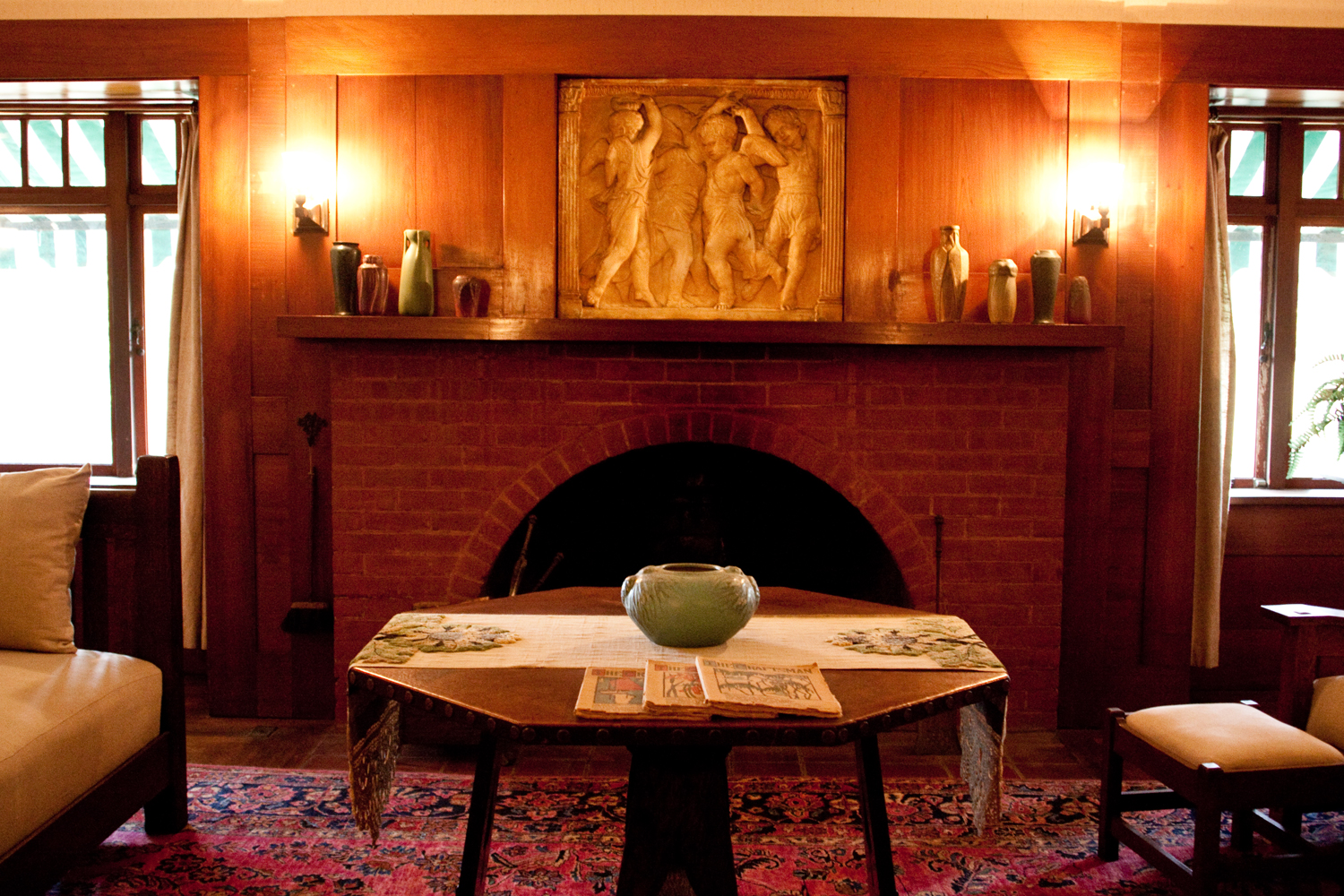
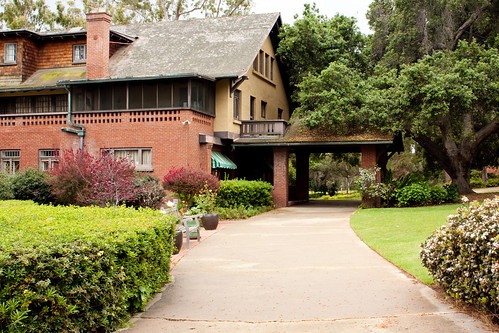
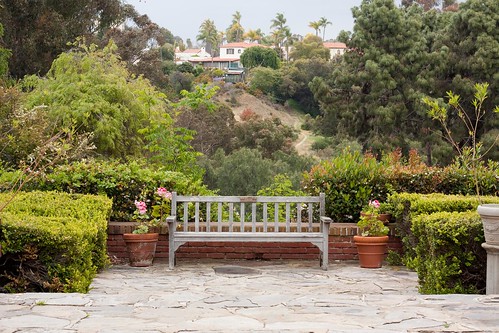
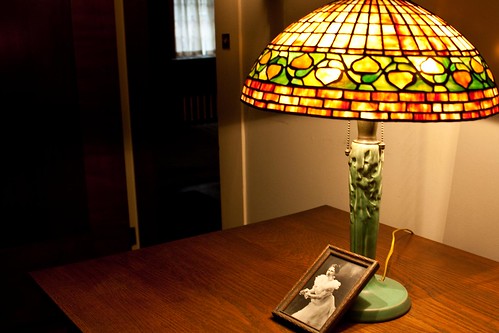
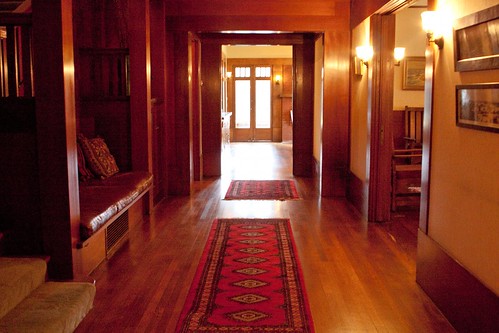

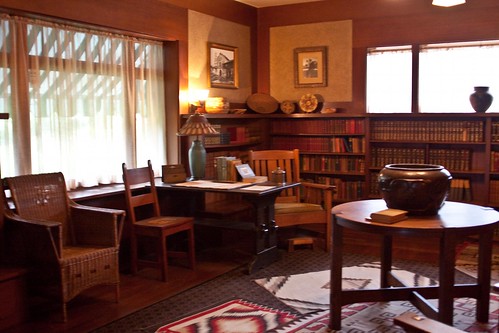

Marston House, San Diego | Roomade
[…] From: San Diego on the Cheap — Part 5: Touring the Brilliant Marston House | Far Out City […]
12/12/2015 at 4:24 pm